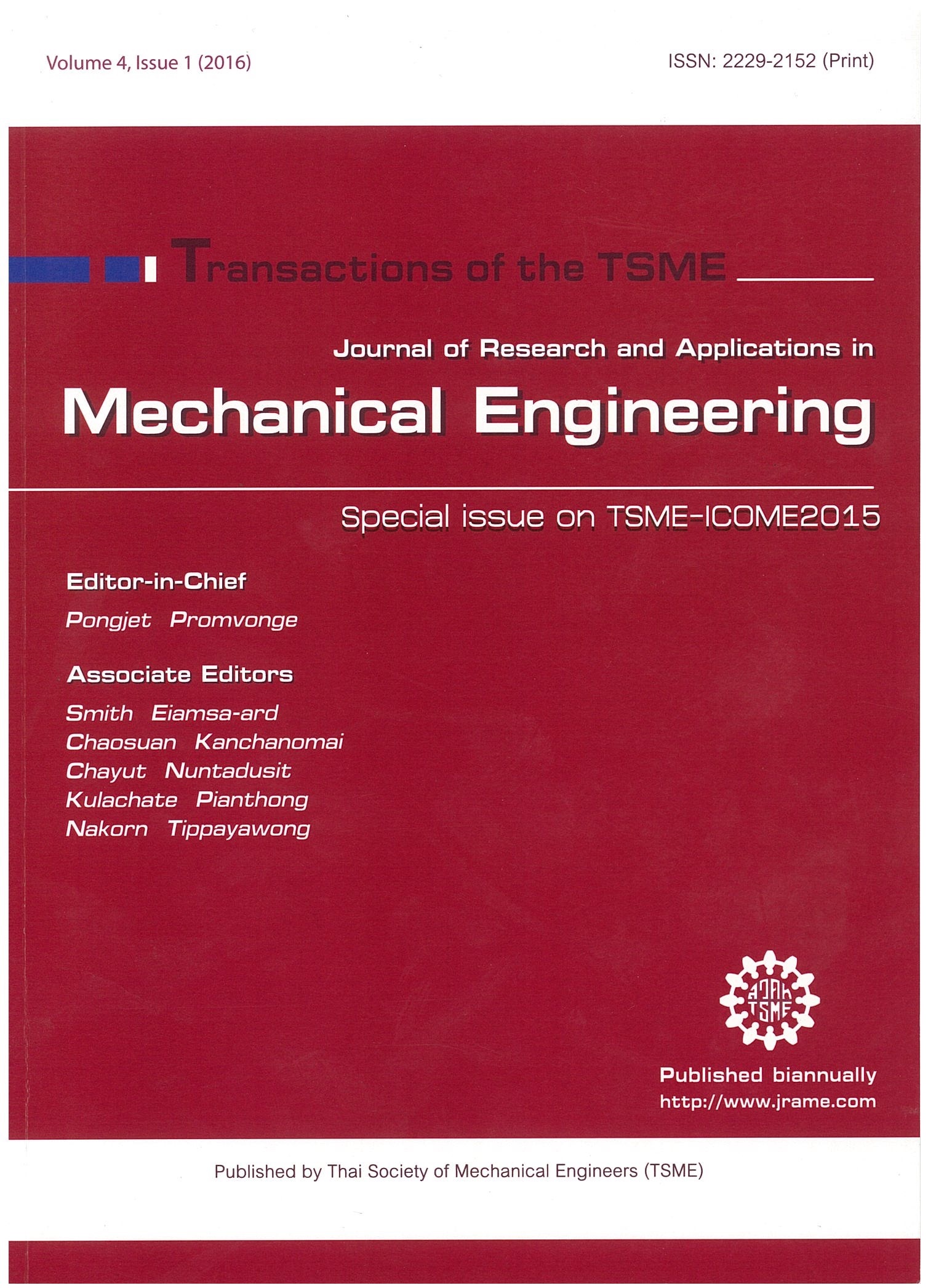Design and development of the lower limb rehabilitation robot for restoration of normal gait in stroke patients
Main Article Content
Abstract
This paper presents new machine of lower limb rehabilitation robot, called “TU Gait Trainer”. The machine has been developed for stroke patients to restore normal gait with trajectory and ankle angle control. While patients were being gotten physical therapy by TU Gait Trainer, their each foot was fastened by foot supporter of the rehabilitation robot and moved follow normal gait pattern by only 1 motor with linkage mechanism which was specific designed for normal gait pattern. During ankles had been moving, TU Gait Trainer was controlling angle of patient’s ankles to move in dorsiflexion and plantarflexion posture same as normal gait pattern also. TU Gait Trainer prototype had been made up and getting efficiency data with real patients. The testing results of real patients with TU Gait Trainer are presented. The results show patients got stronger muscle and they got chance to restore normal walking.
Article Details
This work is licensed under a Creative Commons Attribution-NonCommercial-ShareAlike 4.0 International License.
References
[2] Veneman, J.F., Kruidhof, R., Hekman, E.E.G., Ekkelenkamp, R., Asseldonk, E.H.F.V. and Kooij, H. Design and evaluation of the LOPES exoskeleton robot for interactive gait rehabilitation, IEEE Transactions on Neural Systems and Rehabilitation Engineering, Vol. 15(3), 2007, pp. 379-386.
[3] Schmidt, H., Hesse, S., Bernhardt. R. Safety concept for robotic gait trainers, Annual International Conference of the IEEE EMBS, 2004, pp. 2703-2706.
[4] Schmidt, H., Werner, C., Bernhardt, R., Hesse, S. and Krüger, J. Gait rehabilitation machines based on programmable footplates, Journal of Neuroengineering and Rehabilitation, Vol. 4(2), 2007, pp. 1-7.
[5] Freivoge, S. Schmalohr, D. and Mehrholz, J. Improved walking ability and reduced therapeutic stress with an electromechanical gait device, J. Rehabil Med, Vol. 41(9), 2009, pp. 734-739.
[6] Winter, D.A. The Biomechanics and Motor Control of Human Movement, 3rd Edition, John Wiley & Sons, 2004.
[7] Hamill, J. and Knutzen, K.M. Biomechanical Basis of Human Movement, 3rd Edition, The people republic.
[8] Westlake, K.P. and Patten, C. Pilot study of lokomat versus manual-assisted treadmill training for locomotor recovery post-stroke, Journal of Neuroengineering and Rehabilitation, Vol. 6(18), 2009, pp. 1-11.
[9] Vaughan, C.L., Davis, B.L. and Connor, J.C.O. Dynamic of Human Gait, ISBN: 0-620-23558-6, Mills Litho, Cape Town, 1999.
[10] Philips, J.W. The Foot Functional Foot Orthosis, ISBN: 0-443-049991-2, Longm, 1995.



